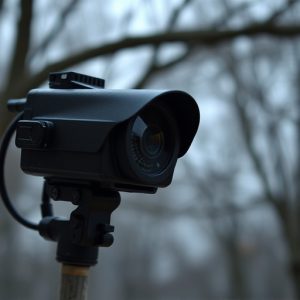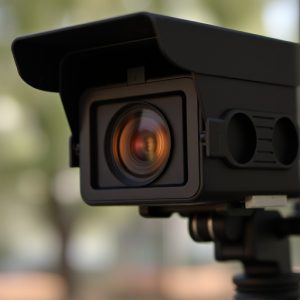Discrete Cameras for Renters: Uncovering Hidden Recording Devices
Discrete security cameras tailored for renters offer a seamless way to bolster home security without…….
Discrete security cameras tailored for renters offer a seamless way to bolster home security without compromising privacy. Hidden recording device signal scanning, utilizing advanced RF and IR technologies, is crucial in detecting covert cameras and microphones. Renters can use specialized equipment to scan through walls and furniture, ensuring no hidden surveillance goes undetected. Ethical considerations and legal implications, such as obtaining informed consent and adhering to data protection laws, are vital when deploying these systems. Effective placement, high-quality equipment, and regular software updates ensure optimal signal detection for peace of mind.
Hidden recording devices pose a significant privacy risk, prompting the need for effective signal scanning methods. This article delves into the world of hidden camera detection, offering insights into understanding and countering these covert threats. We explore discrete security cameras designed for renters, highlighting their role in maintaining privacy. Additionally, we discuss various scanning technologies, ethical considerations, and legal implications. Learn practical implementation tips for conducting successful signal scans to protect against hidden recording devices.
- Understanding Hidden Recording Device Signal Scanning
- The Role of Discrete Security Cameras for Renters
- Scanning Technologies and Their Functionality
- Ethical Considerations and Legal Implications
- Implementation Tips for Effective Signal Scanning
Understanding Hidden Recording Device Signal Scanning
Hidden recording device signal scanning is a critical process in discrete security camera systems, especially for renters who prioritize privacy and discretion. This method involves sophisticated technology to detect and identify signals emitted by covert cameras or tracking devices, ensuring that no hidden surveillance goes unnoticed. By employing specialized equipment, individuals can scan through walls, floors, and even furniture to uncover any clandestine recording devices, providing peace of mind in secure their personal spaces.
For renters considering discrete security cameras for their homes, understanding these scanning methods is essential. It empowers them to take proactive measures against potential privacy breaches. With the help of professionals who offer such services, renters can rest assured that their rental properties remain free from unwanted surveillance, maintaining a safe and private environment.
The Role of Discrete Security Cameras for Renters
For renters looking to enhance their home security, discreet security cameras offer a subtle yet powerful solution. These cameras are designed with privacy in mind, often resembling everyday household items like electrical outlets or smoke detectors, allowing them to blend seamlessly into any living space. This unintrusive nature makes them an attractive option for those who want to protect their property without compromising aesthetics or inviting unwanted attention.
Discrete security cameras for renters provide a layer of peace of mind by enabling remote monitoring via smartphone apps. Occupants can keep an eye on their home from anywhere, receiving alerts for any unusual activity. This feature is particularly valuable for renters who frequently travel or have concerns about potential break-ins. Additionally, these cameras often include motion detection and recording capabilities, ensuring that every moment is captured and reviewed later if needed.
Scanning Technologies and Their Functionality
In the realm of hidden recording device signal scanning, various technologies play a pivotal role in detecting and identifying these covert devices. One prominent method involves utilizing advanced RF (Radio Frequency) detection tools that can uncover signals from wireless hidden cameras and microphones. These discrete security cameras for renters often operate on specific frequencies, making them susceptible to being picked up by the right equipment. By scanning through different frequency bands, professionals can pinpoint the presence of these devices, especially in situations where visual confirmation is challenging.
Another powerful technique leverages infrared (IR) technology, which is particularly effective for night-time operations or environments with minimal visible light. IR scanners can detect heat signatures emitted by electronic devices, enabling the identification of hidden recording equipment. This non-intrusive approach ensures privacy while still providing critical insights into potential security breaches. The versatility of these scanning technologies offers renters and security professionals a comprehensive solution to mitigate risks associated with covert surveillance.
Ethical Considerations and Legal Implications
When discussing hidden recording device signal scanning methods, it’s crucial to address the ethical considerations and legal implications that come into play. The use of discrete security cameras, especially in rental properties, raises privacy concerns. Landlords or property managers who install these cameras must ensure they comply with local laws and respect the reasonable expectations of tenants. Informed consent is a key aspect; tenants should be made aware of camera locations and their rights regarding data protection.
The legal implications extend beyond informational disclosure. The handling and storage of recorded data must adhere to strict guidelines, ensuring that personal information is protected from unauthorized access or use. Moreover, the retention period for these recordings is regulated, and excessive monitoring can lead to legal repercussions. Therefore, responsible camera placement and a transparent policy are essential to navigate this delicate balance between security and privacy.
Implementation Tips for Effective Signal Scanning
When implementing hidden recording device signal scanning, especially with Discrete Security Cameras for Renters, there are several practical tips to ensure effectiveness. First, familiarize yourself with local laws and regulations regarding hidden surveillance, ensuring compliance to avoid legal issues. Privacy is paramount; use direction-specific antennas or filters to pinpoint the source of signals without detecting your own devices, maintaining discreteness.
Second, invest in high-quality equipment designed for signal scanning, including sophisticated receivers and software capable of identifying and tracking specific frequencies. Regularly update your scanning software to account for evolving technology used in hidden recording devices. Additionally, consider the environment; signals can be affected by physical obstructions or electromagnetic interference from nearby devices, so choose strategic placement for optimal results.
Hidden recording device signal scanning is a crucial method to ensure privacy and security, especially in rented spaces. By employing discrete security cameras and advanced scanning technologies, renters can proactively protect their personal information. Ethical considerations and legal implications must be navigated carefully, but with the right implementation tips, effective signal scanning can deter illegal recording devices, promoting a safer environment for all occupants. For renters, integrating these measures is a proactive step towards safeguarding their privacy.


